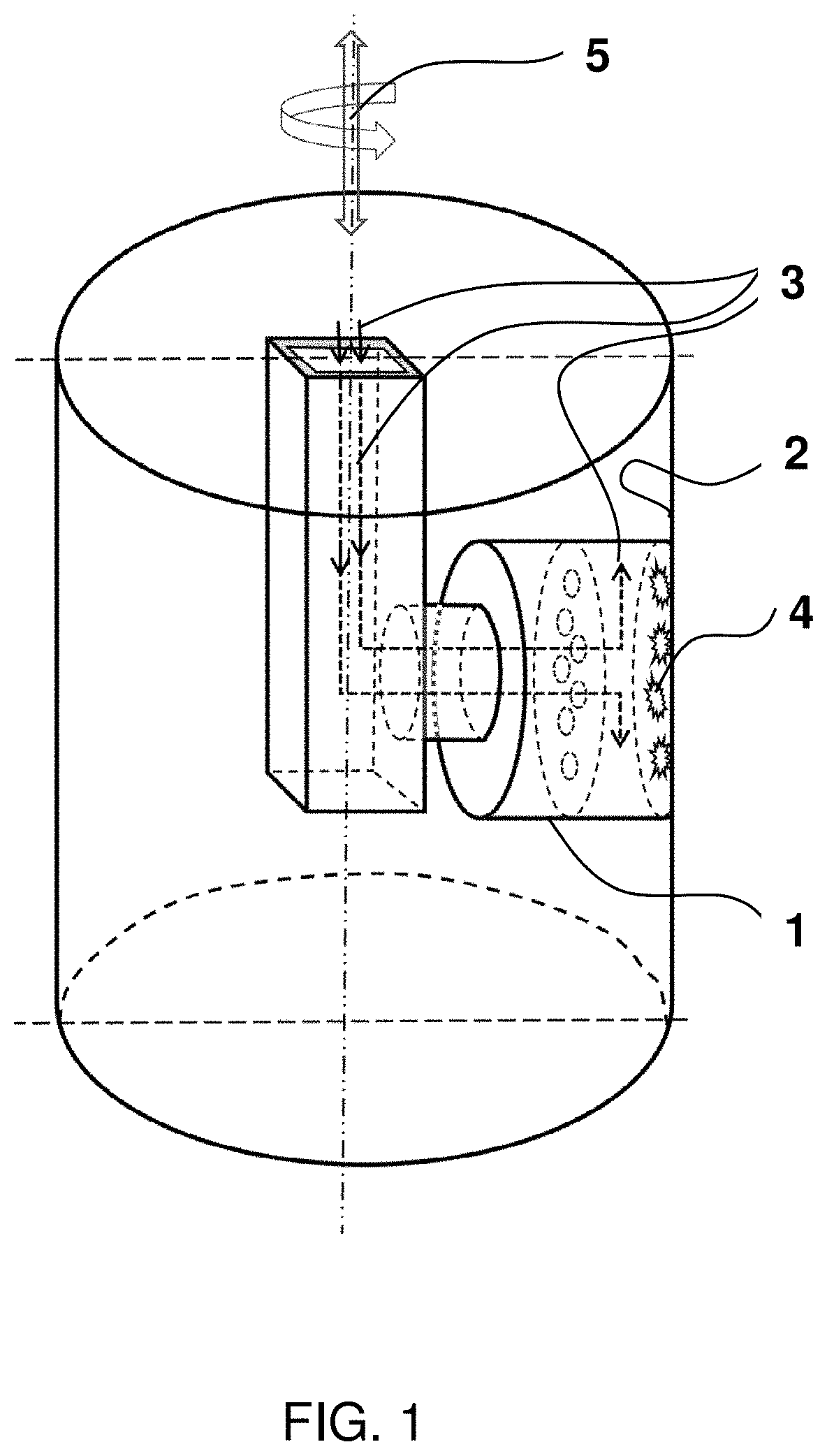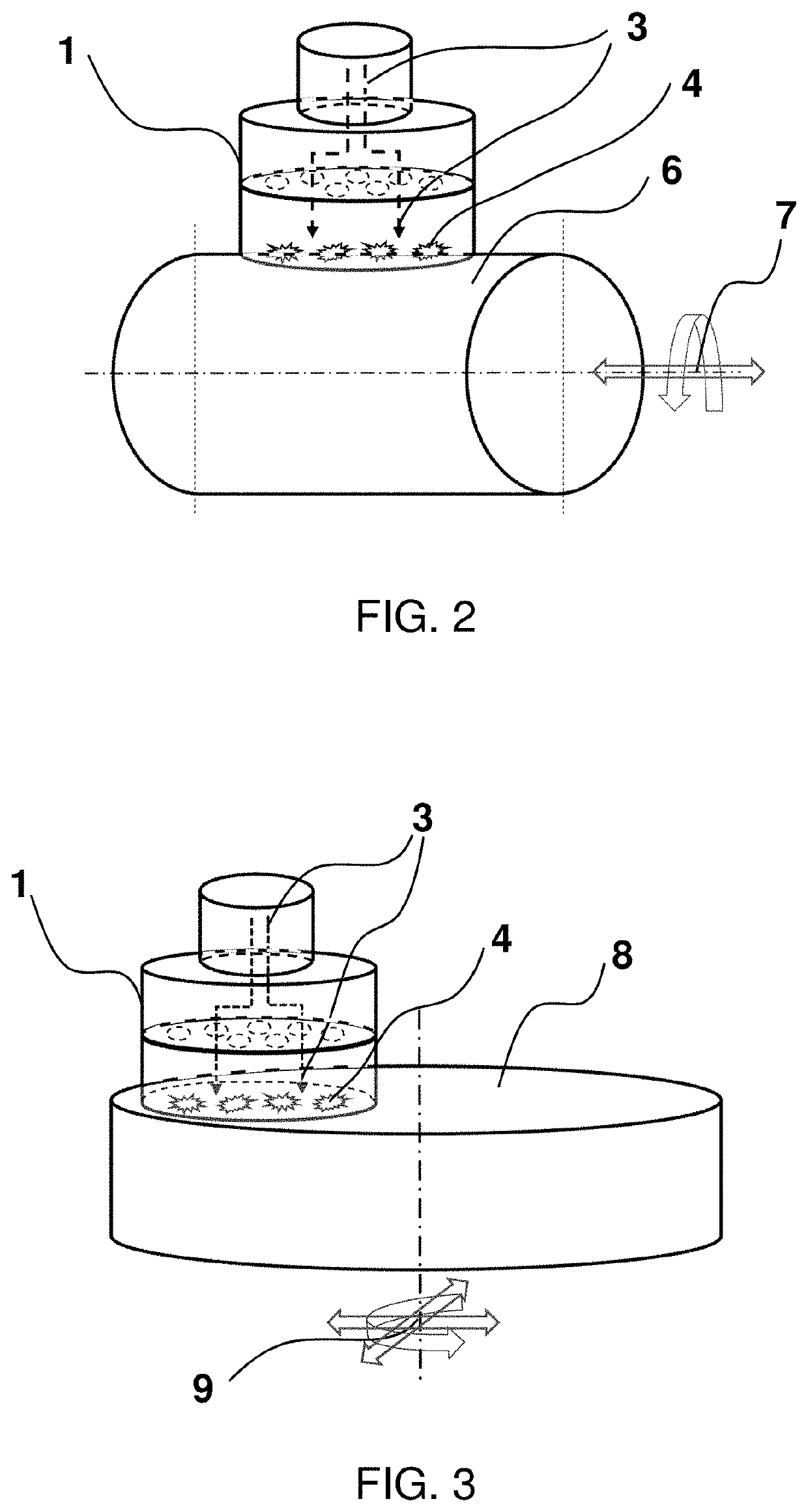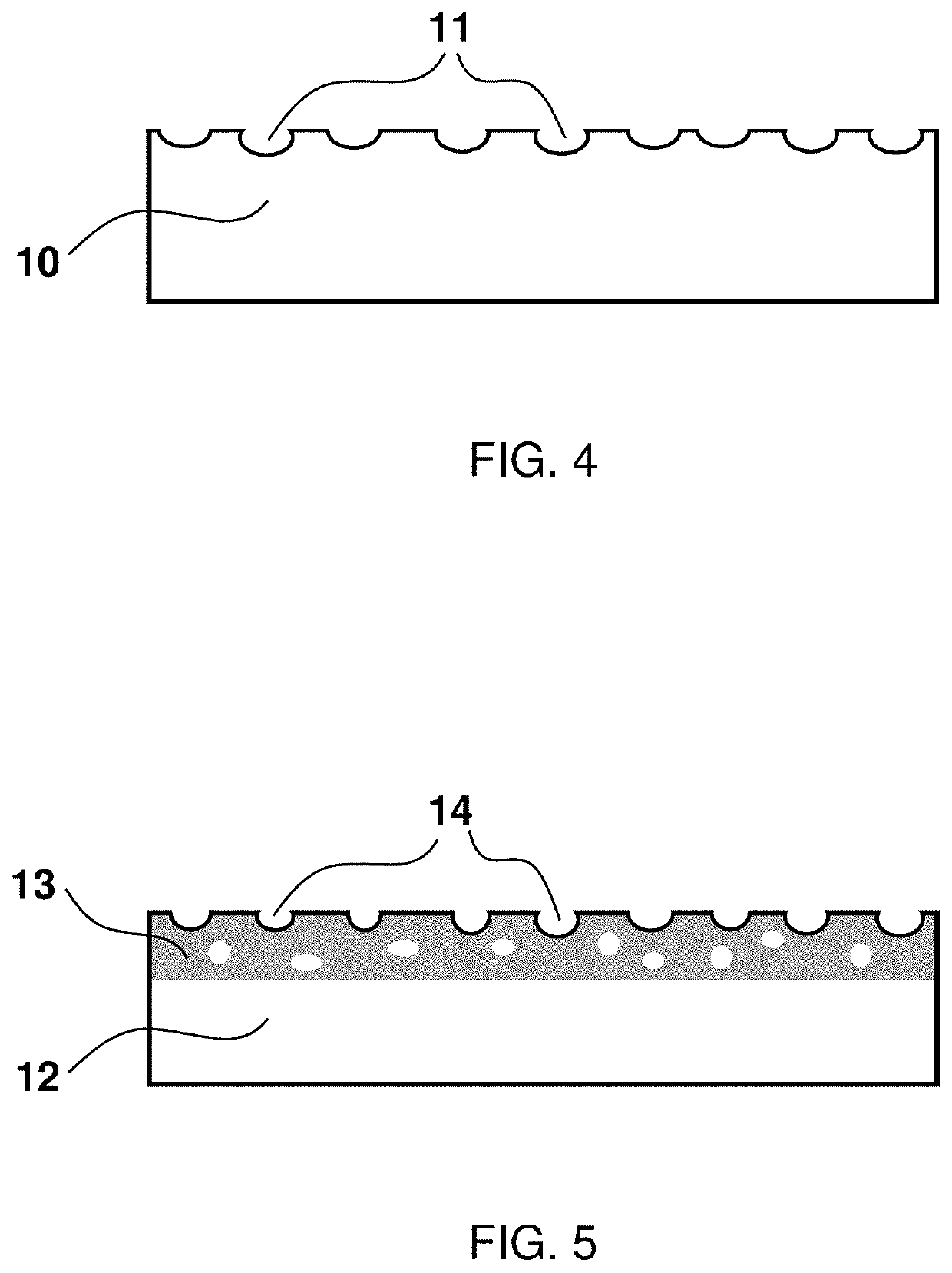Plasma texturing and coating method for frictional and thermal management
a technology of thermal management and texturing, applied in the direction of coatings, mechanical equipment, machines/engines, etc., can solve the problems of slowing down the technology transfer process from research labs to industrial applications, high energy waste of internal combustion engines (ice) and other machines, and expensive or time-consuming above methods, etc., to achieve improved friction and wear, and increase surface hardness
- Summary
- Abstract
- Description
- Claims
- Application Information
AI Technical Summary
Benefits of technology
Problems solved by technology
Method used
Image
Examples
Embodiment Construction
[0046]Referring to the schematic illustration in FIG. 1, a metallic spraying head 1 provides an inner surface 2 of a metallic component with an aqueous electrolyte 3; when a power supply applies electrical current and voltage between the spraying head 1 and the component 2, plasma discharges 4 are generated on the surface 2 of the component. The plasma discharges 4 are created by generating vapors and gases from the electrolyte on the surface 2 due to the heating from the applied electrical power energy initially and then breaking-down the vapors and gases under the applied voltage. Alternatively, the plasma discharges 4 can be created by absorbing at least one compound from the electrolyte to form a low electrical conductive layer on the surface 2 of the component first and then generating the electrical discharging due to the dielectric discharges of the layer under the applied voltage. The spraying head 1 can have motions 5 of rotations and moving up and down so that the entire i...
PUM
| Property | Measurement | Unit |
|---|---|---|
| current density | aaaaa | aaaaa |
| thickness | aaaaa | aaaaa |
| thermal conductivity | aaaaa | aaaaa |
Abstract
Description
Claims
Application Information
 Login to View More
Login to View More - R&D
- Intellectual Property
- Life Sciences
- Materials
- Tech Scout
- Unparalleled Data Quality
- Higher Quality Content
- 60% Fewer Hallucinations
Browse by: Latest US Patents, China's latest patents, Technical Efficacy Thesaurus, Application Domain, Technology Topic, Popular Technical Reports.
© 2025 PatSnap. All rights reserved.Legal|Privacy policy|Modern Slavery Act Transparency Statement|Sitemap|About US| Contact US: help@patsnap.com



